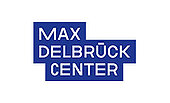Improved Sleeping Beauty Transposon System for gene therapy: SB100X/pT4
Challenge
The advancement in gene and cell therapy in the recent years hase been tremendous and many treatments in late clinical stages with a curative potential will soon enter the market. Stable and effective integration of genes is a key element in the production of safe and affordable cell products. The drawbacks of viral systems such as retro- or lentiviral vectors are well known. Potential insertional oncogenesis due to preferential integration into transcritpionally active regions is a major concern. Also, the regulatory requirements for GMP production of viral vectors are very strict and as a consequence production costs are likewise high. Therefore, cost effective non-viral gene transfer systems, with similar efficiency and a more beneficial safety profile, are highly sought after.
Technology
The Sleeping Beauty (SB) transposon system mediates efficient and stable gene transfer and is an attractive non-viral gene transfer tool. It consists of two components which have been improved over time with a steady increase in activity. The transposon (such as pT and pT2) is the vector carrying the gene of interest and the transposase (such as SB10, SB11 and SB100X) catalyzes gene insertion. In addition to the improved SB100X transposase, a new hyperactive SB transposon, pT4, was developed which was generated by optimizing the affinity between transposase and transposon. PT4 shows increased activity over the widely used pT2 transposon in HeLa cells and optimization for the use in primary cells such as T cells is ongoing. The novel SB100X/pT4 combination provides an improved and independent alternative over the SB11/pT2 system. The already established hyperactive SB100X addresses a lot of issues related to low efficiency of the early SB11 variant and is widely used in various gene transfer applications (for reference and IP details see 03-00251). It will enter the clinic to treat age-related macular degeneration (AMD) in late 2017 where it is used to introduce PEDF in autologous retinal pigment epithelial which are transplanted back to the patient.
In T cell engineering, proprietary optimized protocols with SB100X yield now TCR- or CAR-modified T cells with efficiency and reliability in the range of viral transduction protocols. Compared to protocols comprising the older SB11 version, which were used in the first clinical SB CAR-T trials, this allows markedly faster manufacturing of sufficient and potent CAR T cells.
Unlike viral vectors or the PiggyBac transposon system, SB has a random integration profile. Hence, it might be safer than integrating viral vectors which are currently used in the clinic. Moreover, in contrast to other non-viral gene editing systems like TALEN or CRISPR/Cas, SB is by nature a precise gene insertion system. Both plasmid components can be easily used in other formats such as mRNA, minicircle or miniplasmid resulting in significantly improved transfection rates. In the clinical setting, SB has several advantages over viral vectors translating into considerable cost reduction due to less regulated GMP manufacturing, adaptive scalability and long shelf-life of batches. In summary, the new SB100X/pT4 SB system holds great promise as an efficient, safe and cost effective non-viral alternative in gene therapy.
Commercial Opportunity
Available for licensing or collaboration
Patent Situation
PCT application PCT/EP2017/056133 with priority of March 15, 2016 is pending
Further Reading
Nucleic Acids Res. 2017; 45(1), 311-326.
Crit. Rev. Biochem. Mol. Biol. 2017 Apr 12, 1-26.





